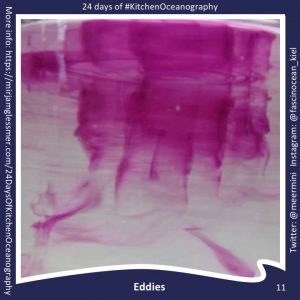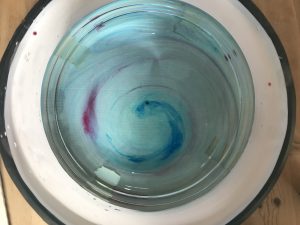
Tag: eddy


Spinning dye curtain — when a tank full of water has not reached solid body rotation yet
With all the rotating tank experiments I’ve been showing lately, one thing that comes up over and over again is the issue of solid body rotation. On our DIYnamics-inspired turntable for…

Eddy on the beach
It’s bugging me that I don’t really understand what’s going on here or why… But look at how these eddies form on the beach right outside my window and for…

Eddy generation and optics.
Eddies. Dips in the surface and shadows on the ground. I always get really fascinated by watching how eddies are generated by obstacles in a fluid. But it is especially…

Eddies in a jar
Rotating experiments in your kitchen. Do you know those Saturday mornings when you wake up and just know that you have to do oceanography experiments? I had one of those…